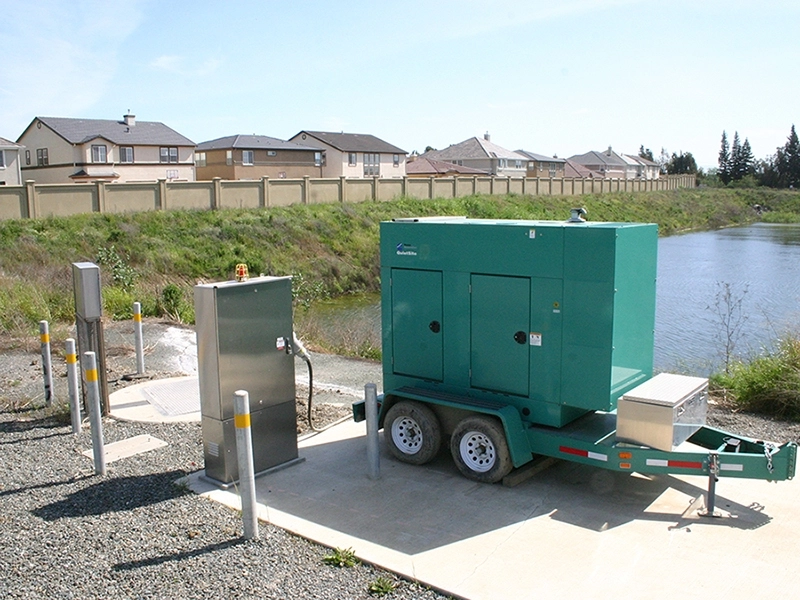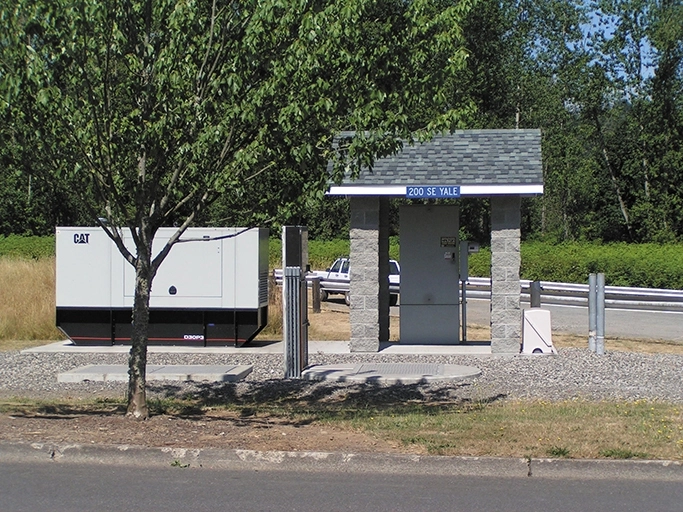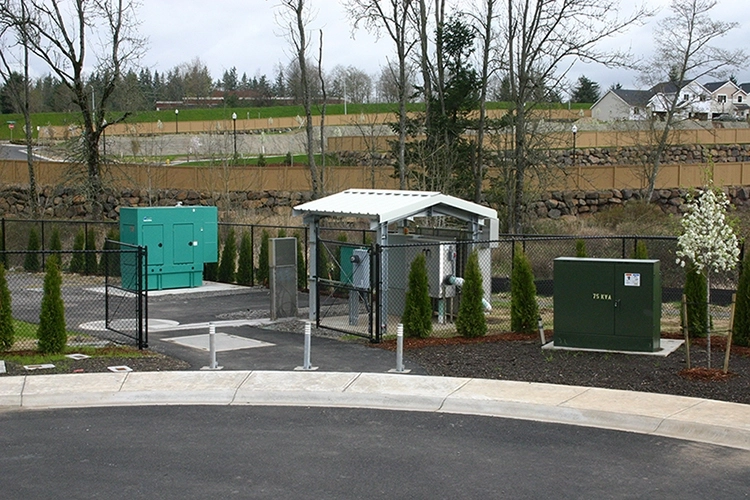
Romtec Utilities designs and supplies complete pump and lift stations with generators for back-up and auxiliary power. There are many types of generators available in the market and choosing which one to use relies on the needs of the pumping system and the preferences of the system owner or operator. Let’s take a look at some available generator types and common design considerations that occur when including a backup generator in a lift station design.
Romtec Utilities supplies a large range of generator sizes, typically ranging from 10kW to 250 kW. The power is created by an engine the drives an electrical generator. The engines that power a generator can be fueled by different sources, including gasoline, diesel, propane, natural gas, hydrogen, and more. Each fuel is different in terms of cost, shelf-life, availability, and emissions. Depending on your project location, these differences can impact a lift station design.
Another potential impact to design is that generators can be mobile or permanent. Depending on the type of generator selected, the lift station electrical design can change. Mobile generators are often mounted on trailers, but there are also truck and skid mounted generators. The lift station electrical design needs to address how and where mobile generators plugin to the system. Permanent generators are available with different enclosure types depending on the site conditions where they are installed. These conditions include considerations such as control buildings, the presence of corrosive materials, and noise pollution.

All of these different generator types and the requirements of the project location lead to a number of different design considerations. One of the first considerations is appropriately sizing the generator. This includes designating the power supply needed, the total power consumption of the lift station, and the site location. Generators are typically rated to run at around 80% of the maximum output for ongoing use, but in locations with high elevation, high temperatures, or high humidity, generators may need “derating” to account for output losses and heat buildup. Put simply, this means designing a generator to operate below its rated maximum power output to resolve environmental conditions.
After the generator is sized, it must be located on the site. Even mobile generators must be located to define how it is plugged-in and where it sits during operation. On most systems, a mobile generator requires adding a gate and ample vehicle access to the lift station site plan. Permanent generators can be located in a control building, under a shelter, or on an outdoor slab.

Depending on the location, the generator may be subject to code requirements for sound and emissions, and it may need a specialized enclosure. Generators in control buildings need to be properly ventilated and may require sound attenuation to protect operators in the building with the generator running. Additionally, states maintain specific requirements for engine emissions. Sound attenuation can be required for generators located near schools or housing. At locations where corrosive conditions may be specified, special enclosures may be required, such as near costal environments.
After these considerations are addressed, the electrical design for the lift station must also reflect how the generator transfers power to the pumping system. When a mobile generator is used, it is typical to include conduit receptacles on the control panel with a manual transfer switch. This allows the generator to be moved into place, connected to the lift station electrical controls, and switched over for operation. With permanent generators, a manual or automatic transfer switch can be included. Manual transfer switches are typically use in locations where power outages are infrequent and adequate operators are available to visit the lift station and transfer to generator power. Automatic transfer switches are used where outages may occur frequently or where there is not adequate storage for inflows when the system is not running. As the name implies, automatic transfer switches detect a power outage or power quality issues and transfer to the generator in less than a second, preventing downtime.

Generators are an important feature to most lift station systems, and they can be designed and supplied in many different ways. In addition to the above concerns, it is also beneficial to consider auxiliary power for power tools and other equipment onsite. Addressing generators and your specific pumping goals during the design phase can save a lot of headaches during emergency situation in the future. Romtec Utilities will always design your system with the best generator to meet your pumping goals and site requirements.

